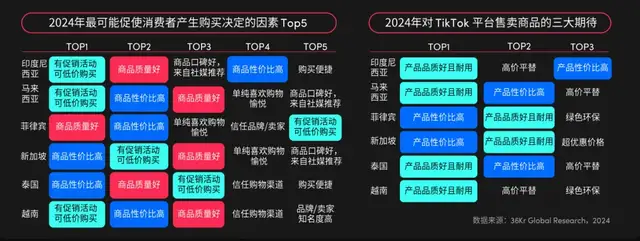Live commerce is changing the landscape of the Southeast Asian e-commerce industry with its unique charm and powerful influence, becoming an important connection point between brands and consumers.
First, Southeast Asia Live Streaming: A Major Overhaul of the Game, a Major Market Reshuffle
Clearly, compared to traditional e-commerce models, "live streaming for sales" has two main advantages. First, it allows consumers to understand the detailed information about products and the brand stories behind them more intuitively. Second, it breaks down geographical and cognitive barriers, thereby accelerating the circulation speed of goods.
In the past two or three years, live streaming for sales has flourished across Southeast Asia, with top influencers often achieving sales of over a million dollars per live session.
In the future, live commerce in the Southeast Asian consumer market is expected to unleash even greater potential. According to a report jointly released by Google, Temasek, and Bain & Company, the total transaction value of the Southeast Asian digital economy is expected to reach $263 billion in 2024, a 15% increase year-on-year, with video shopping accounting for 20% of total e-commerce transactions.
All these figures indicate the unlimited potential of live streaming in the Southeast Asian market and provide a new overseas channel for businesses looking to quickly enter the region. These businesses span various niche categories, including handbags, flip-flops, cleaning and daily chemicals, consumer electronics, and more.
In fact, the rapid rise of live commerce platforms like TikTok Shop in Southeast Asia not only reflects the enormous potential of the live commerce model but also heralds the birth of a diverse ecosystem. Within this system, the platform serves as the core hub playing a key role in construction, users are active participants, influencers become important content creators and traffic guides, and service providers offer professional support from the sidelines. The interplay of these forces, each promoting the other, collectively paints a highly expansive business blueprint.

Second, Good Products Meet Influencers, The Decisive Winning Move in Southeast Asia
In the past few years, user education and basic logic in Southeast Asian live commerce have been perfected, and related support systems such as logistics and payment have gradually developed. This has enabled the live commerce model to gradually occupy more consumer scenarios.
From the perspective of user profiles, according to data from the United Nations Economic and Social Commission for Asia and the Pacific (ESCAP), the median age of the population in Southeast Asia in 2023 is only 29.6 years old. These consumers place more emphasis on individuality, authenticity, and identity, and are willing to pay for their interests. These characteristics make them significant drivers of e-commerce consumption.
According to Partipost's "2024 Influencer Marketing Report," approximately 75% of Southeast Asian consumers indicate a preference for purchasing products recommended by influencers, while 80% of respondents have made at least one purchase decision based on an influencer's endorsement. At the same time, the "2024 Global Consumer Trends White Paper Southeast Asia Edition" shows that Southeast Asian consumers place great importance on cost-effectiveness, and the main factors that motivate Southeast Asian consumers to purchase are marketing factors (promotional activities) and price factors (high cost-effectiveness/good quality).
Third, The Expert Mode Evolves, the Industry Heads Towards Specialization and Verticalization
The live commerce landscape in Southeast Asia is transitioning from the "entertainment anchor model" to a new phase of "quality live broadcasts." As the industry cycle evolves, pure entertainment anchors will gradually "disappear," and the future of Southeast Asian live commerce will develop towards a more professional and vertical direction.
To lower the threshold for businesses to collaborate with experts, TikTok Shop actively encourages creators to produce short videos and live content suitable for the Southeast Asian market, integrating local culture, language, and popular elements to enhance the appeal and resonance of the content.
On the other hand, TikTok Shop has built a rich ecosystem of experts in Southeast Asia. Here, not only do top experts lead trends, but mid-level experts are also thriving. Although their fan base may not match that of top experts, they can communicate and interact with their audience more promptly due to high interactivity and frequent feedback mechanisms, quickly gaining user favor.
Fourth, Conclusion
Live commerce is like a new opportunity for cross-border merchants.
The natural cultural affinity and aesthetic interconnectivity with China make the goods and culture of cross-border merchants more readily accepted in the Southeast Asian market. Various forms of communication, such as live broadcasts, short videos, and expert collaborations, can help capture consumer demand more efficiently, attract traffic, and ultimately achieve sales conversions, finding new growth points in a fiercely competitive market.
The rich and colorful culture of Southeast Asia is an inexhaustible source of inspiration for live broadcasts. Each country is like a colorful painting, with its own unique cultural imprints and traditional treasures. If merchants can become cultural explorers, delve deeply into the profound connotations of each country's culture, and cleverly integrate cultural elements into live broadcasts and products, they are sure to resonate with consumers.
Currently, whether it's the introduction of new and diverse in the live commerce field or the vigorous release and tilt of platform resources, it all indicates the enormous potential of the Southeast Asian market.
This article is from xiaguangshe, author Tang Fei, with some content deleted.